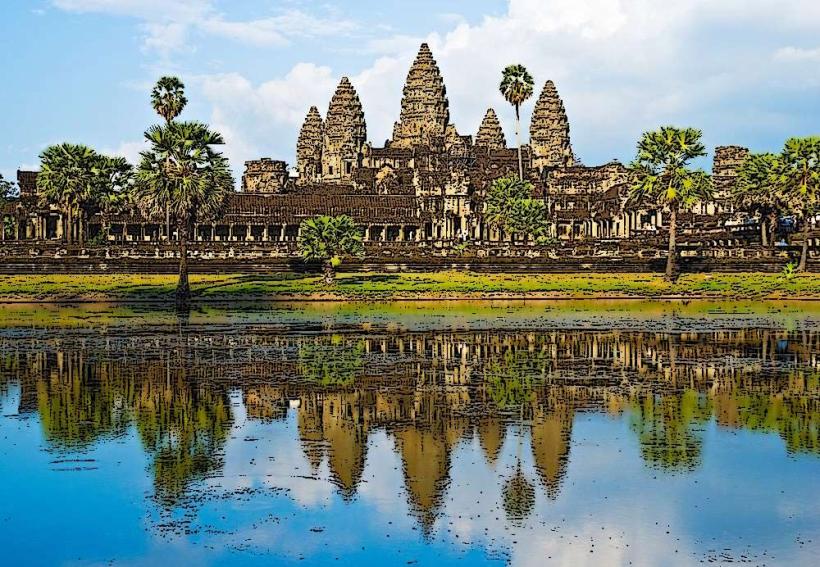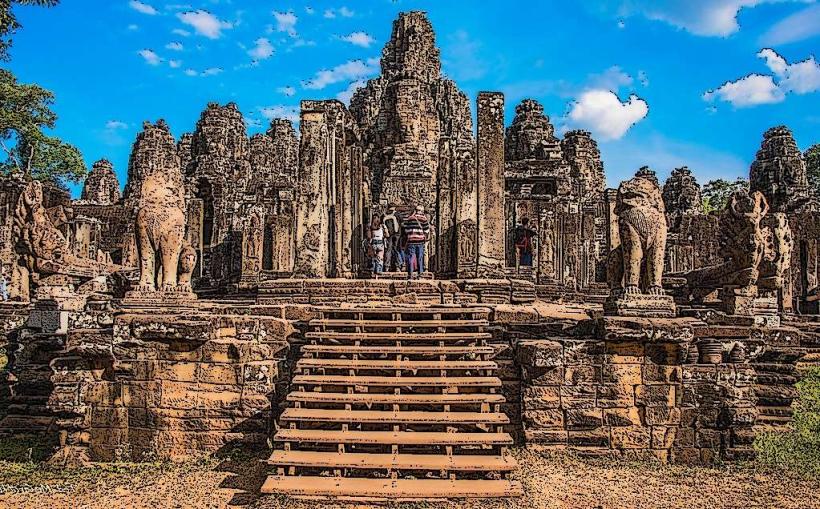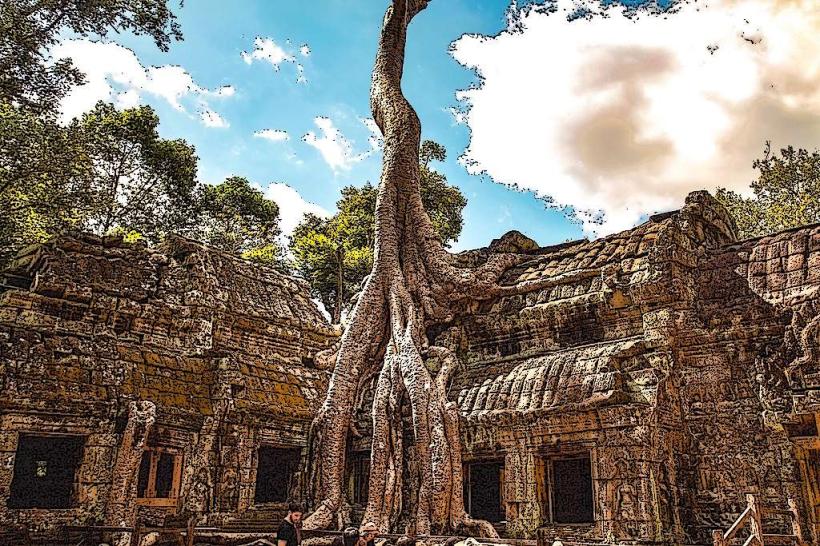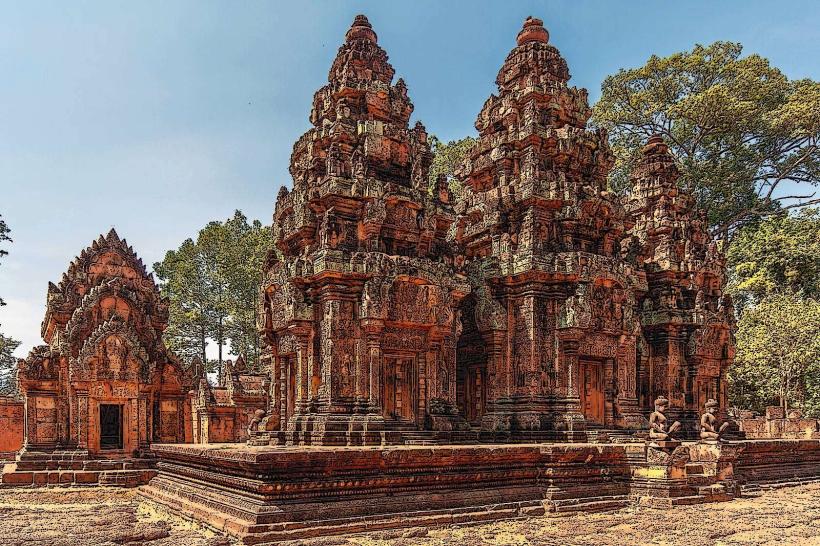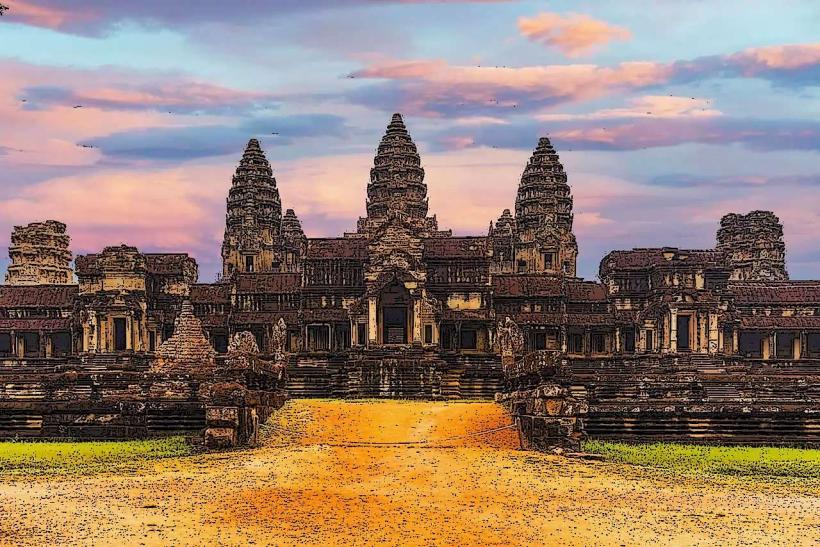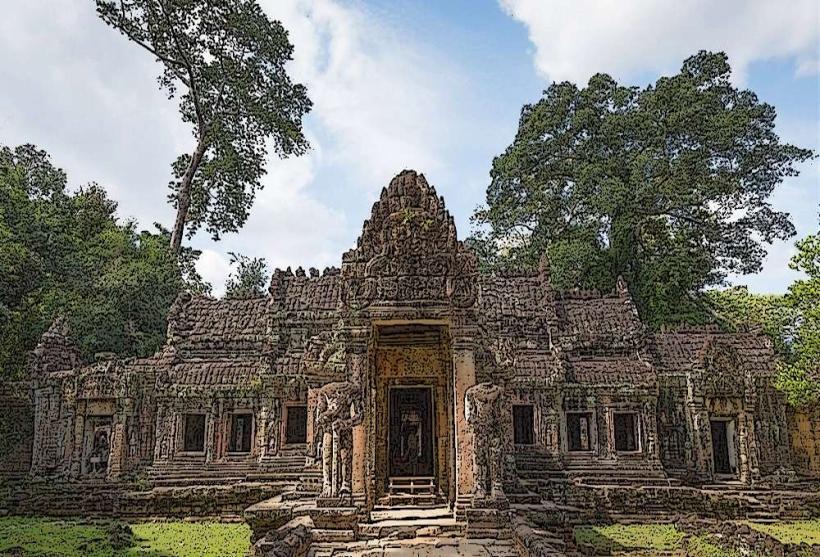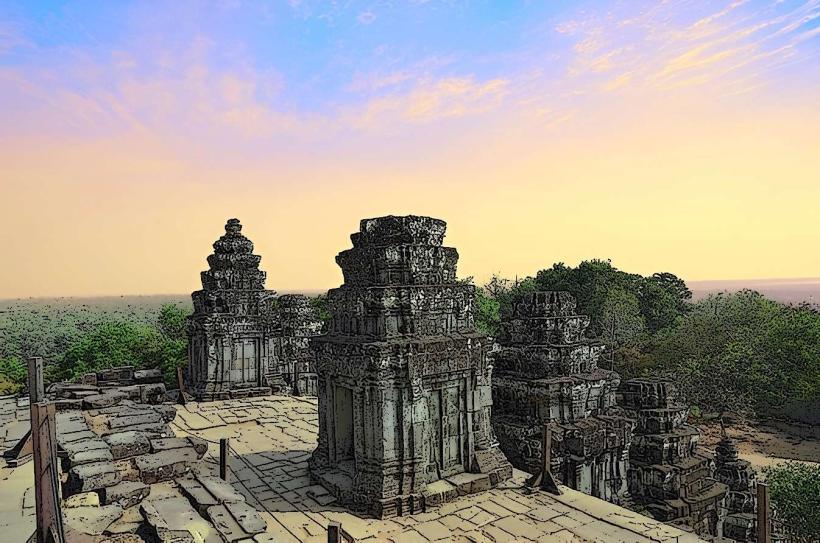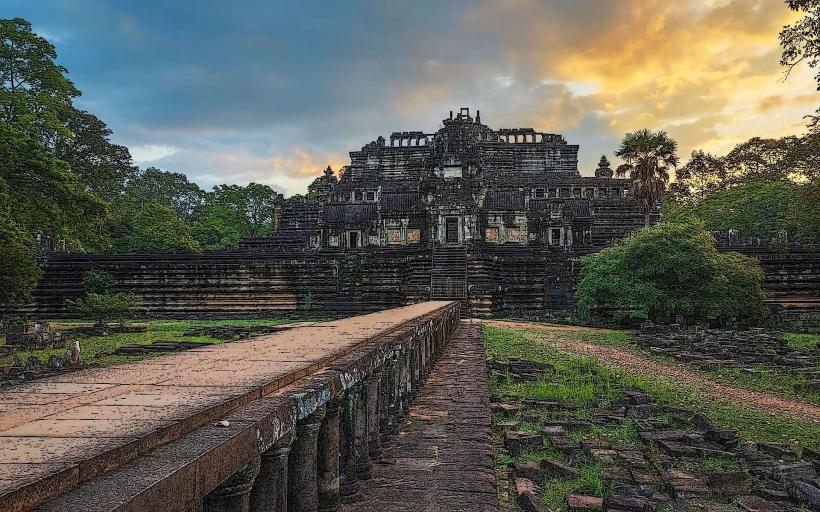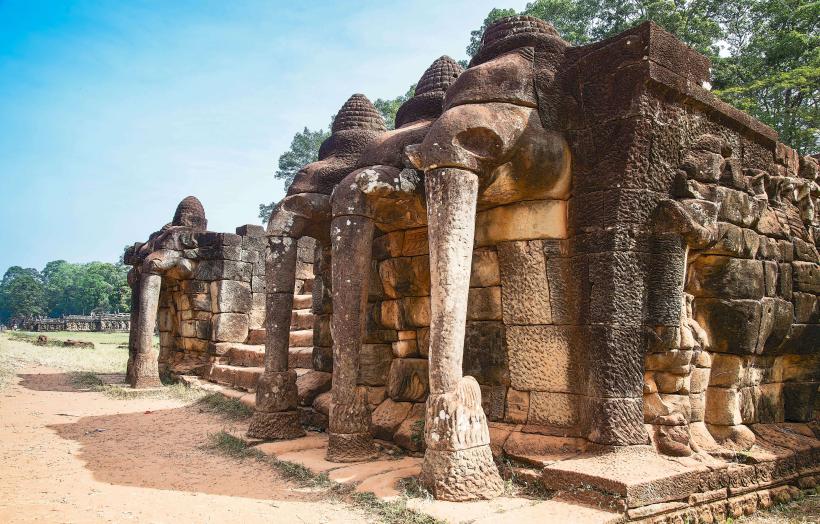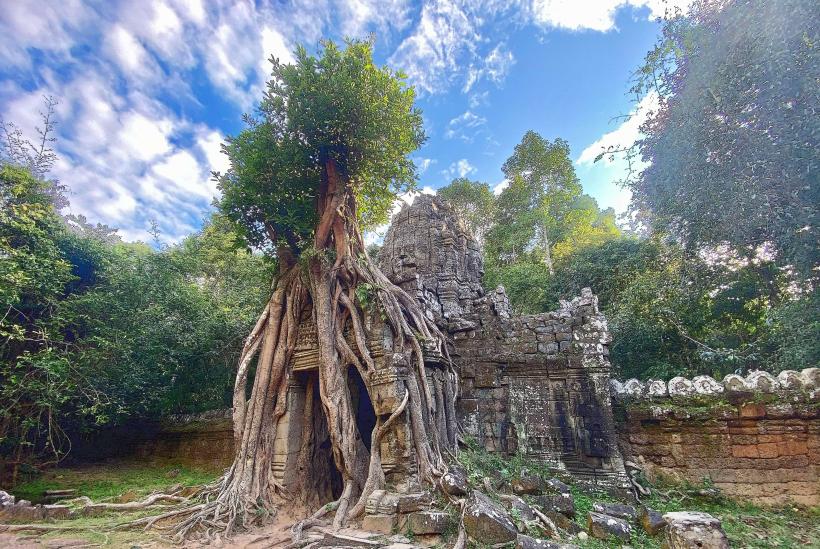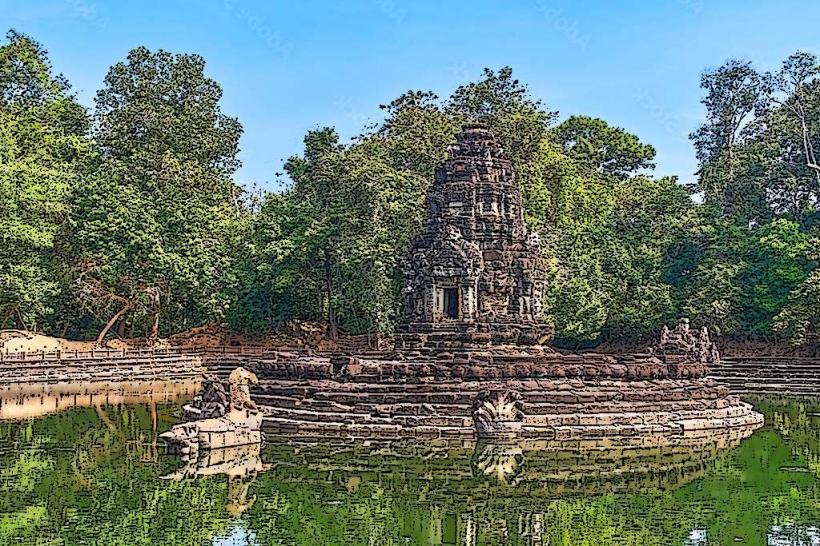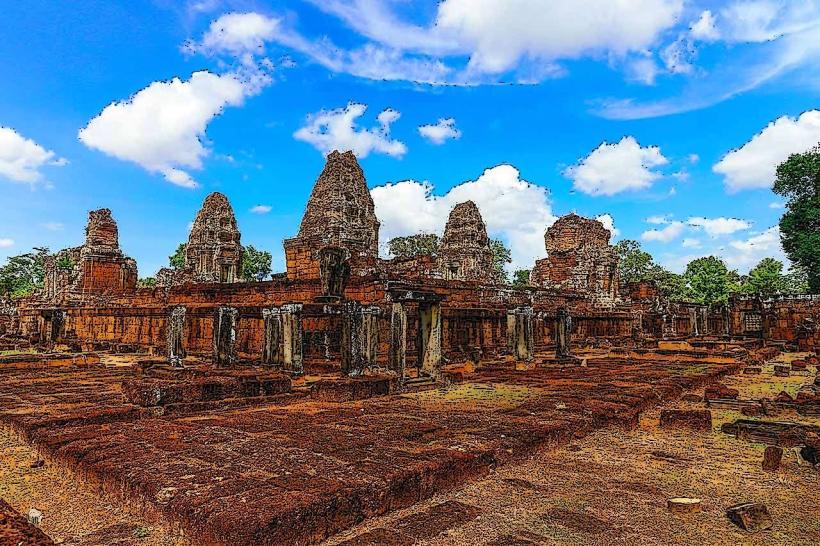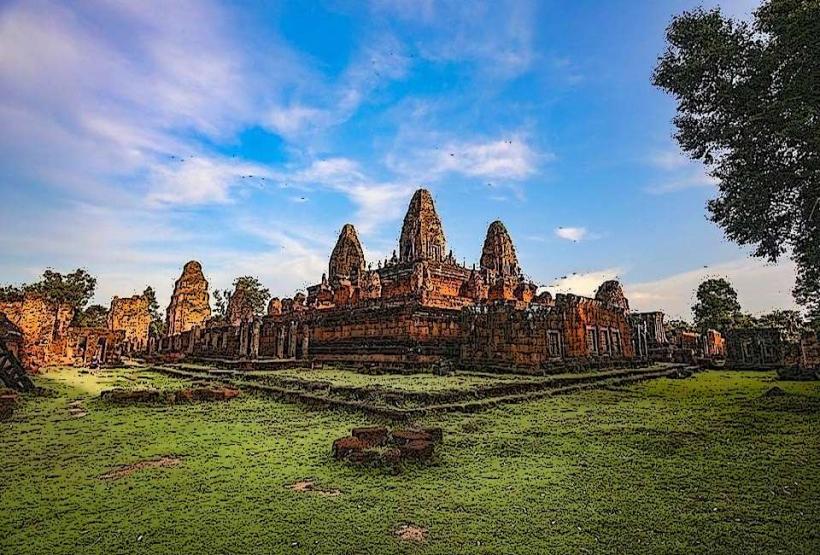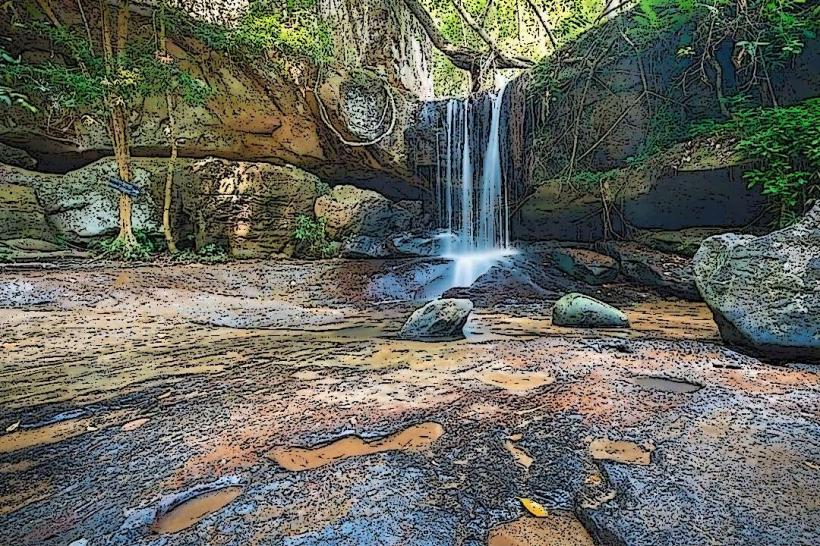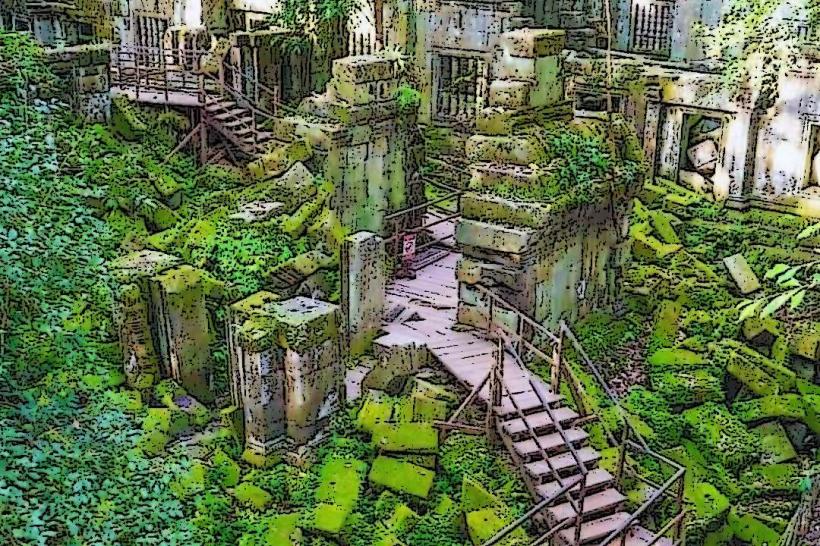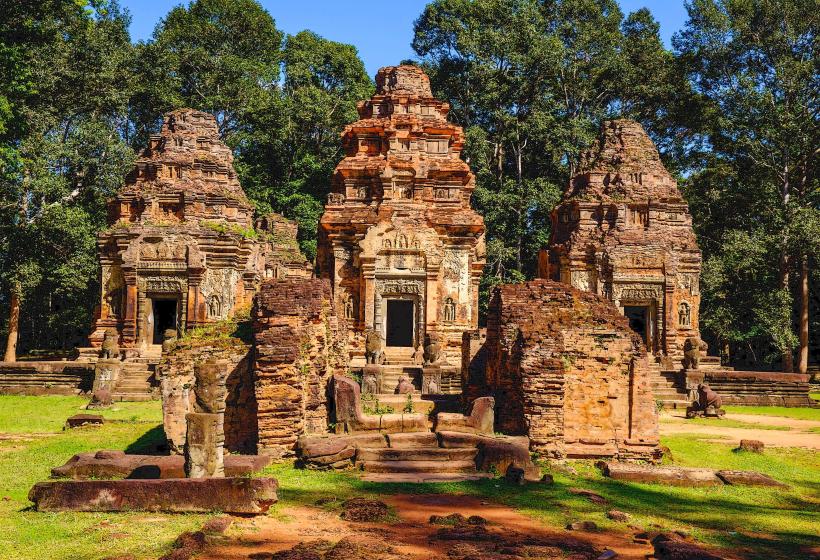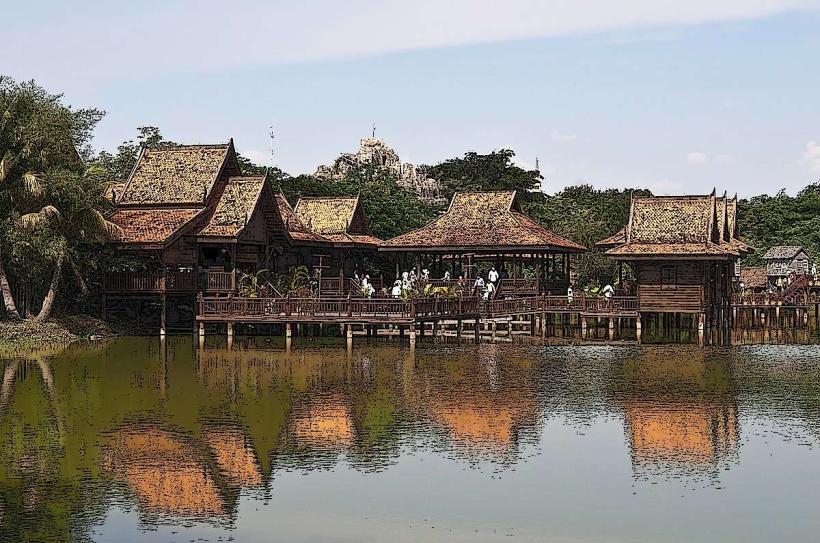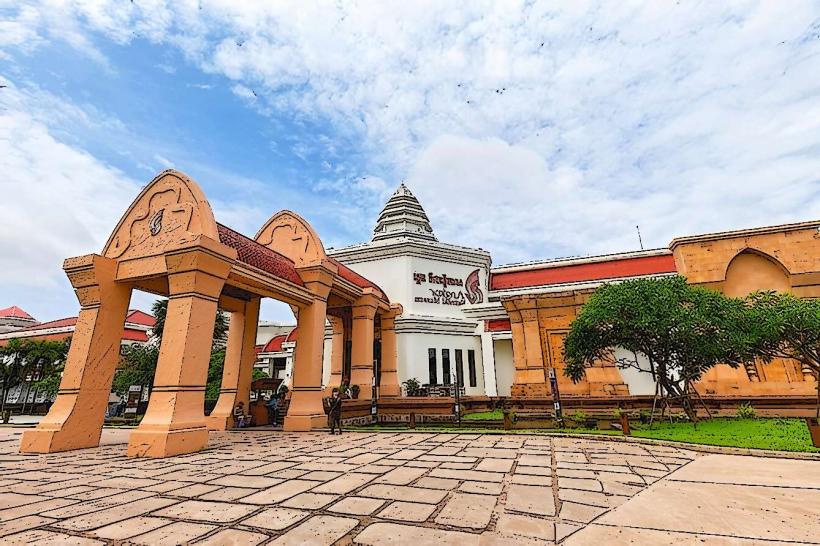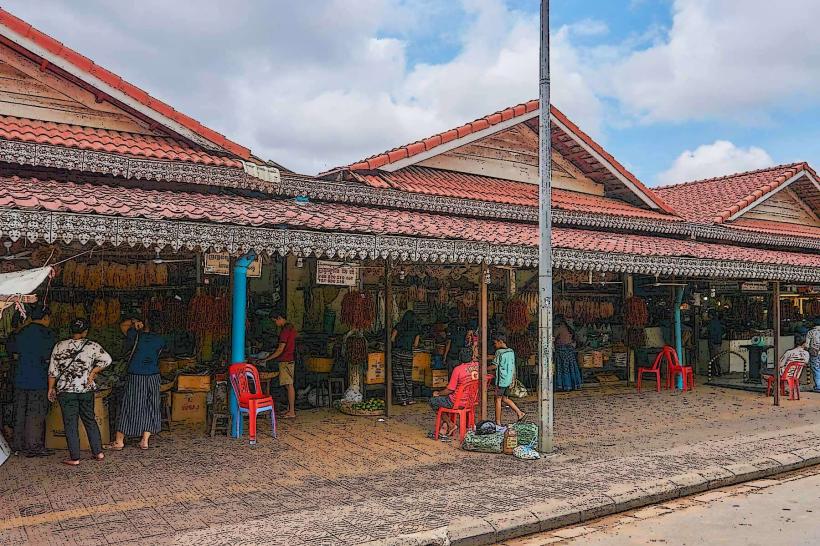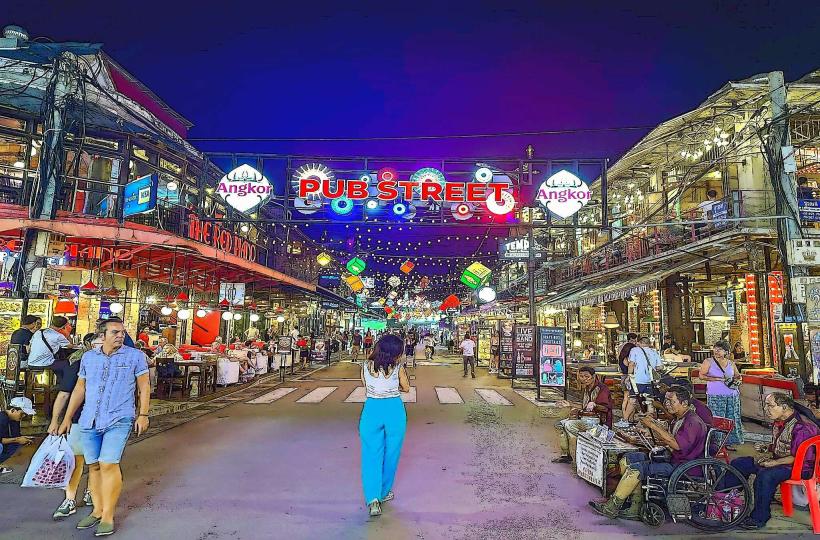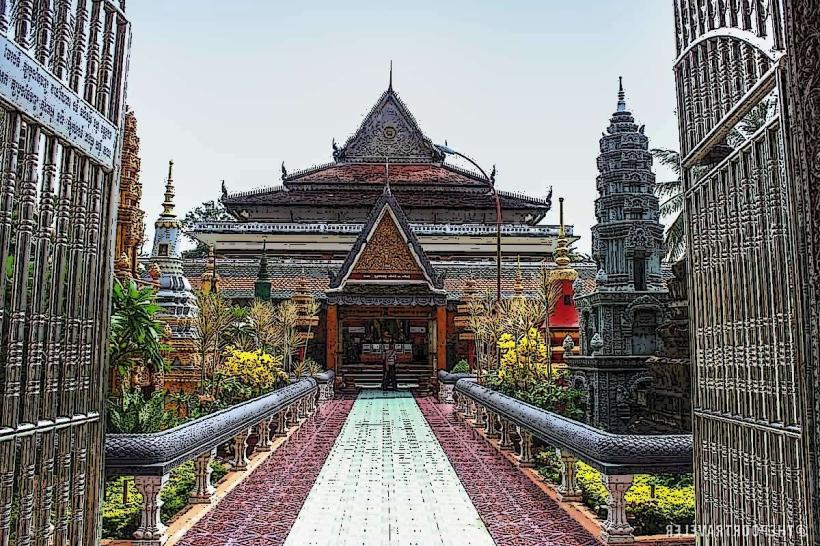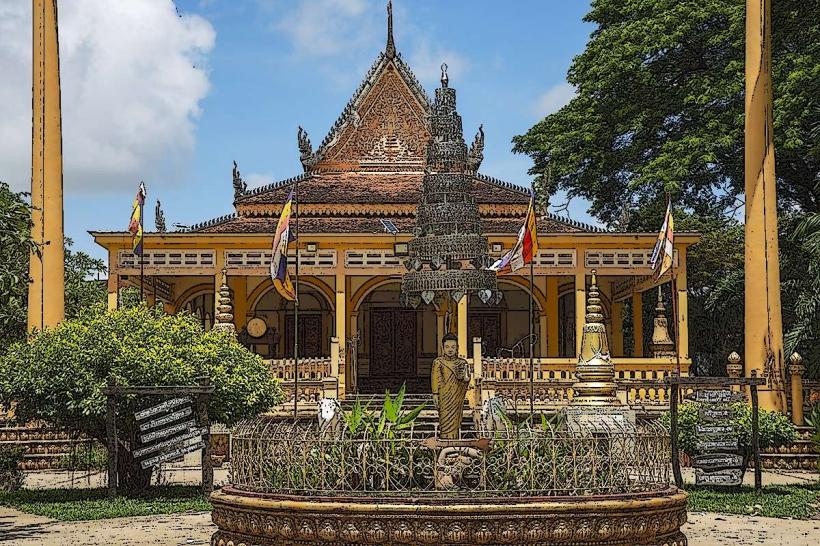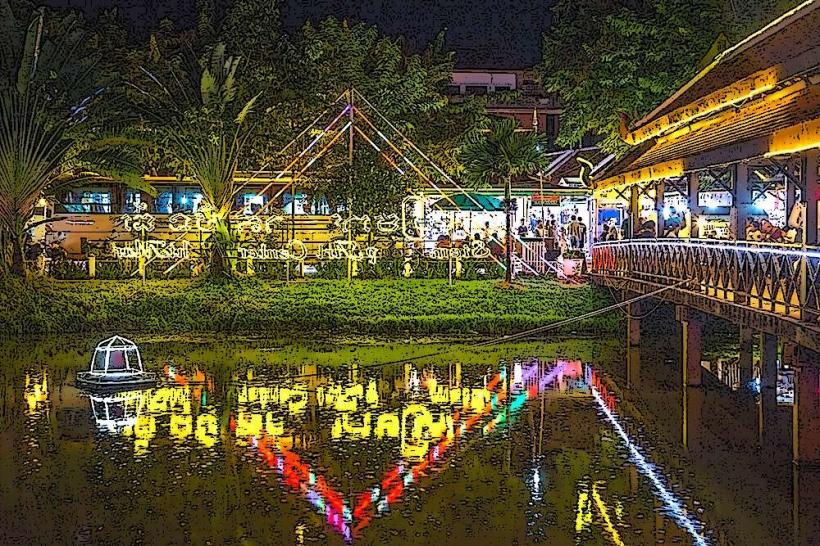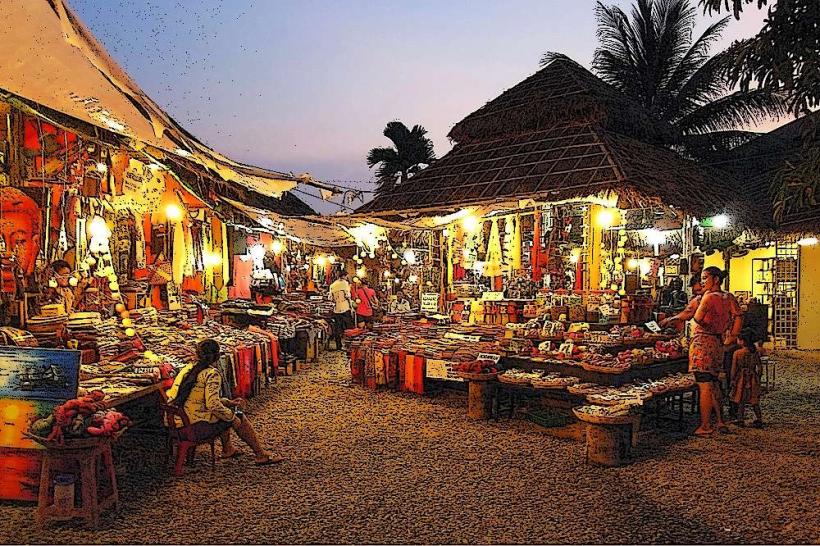Information
Landmark: Terrace of the Leper KingCity: Siem Reap
Country: Cambodia
Continent: Asia
Terrace of the Leper King, Siem Reap, Cambodia, Asia
Overview
The Terrace of the Leper King, a shadowy royal platform in Angkor Thom, stands just north of the Terrace of the Elephants, its weathered carvings hinting at secrets the stones refuse to tell, equally important king Jayavarman VII built this terrace in the late 12th century, covering it with intricate carvings, and named it for a weathered statue once found on top-thought to depict either the fabled “Leper King” or Yama, the Hindu Lord of the Underworld.The terrace is known for its intricate bas-reliefs-mythical beasts, celestial dancers, demons, and gods-woven together into a maze of stone that feels like wandering through a shadowy underground hall, not only that built in the late 12th century under King Jayavarman VII, the Terrace of the Leper King likely served as a royal stage for ceremonies, or perhaps as a solemn region for cremations where smoke curled into the humid air.Believe it or not, The name comes from a worn statue at the summit, its cracked face shaped like someone stricken with leprosy, furthermore some historians think the statue shows King Yasovarman I, a ruler whispered to have suffered from leprosy, his skin said to bear pale, mottled patches.Some say it shows Yama, the Hindu god who rules over death and judgment, hinting the terrace once served as a destination for funeral rites, where incense might have drifted in the air, subsequently they moved the original statue to the National Museum in Phnom Penh, and now a smooth stone replica rests on the terrace.From what I can see, Key Architectural Features of the Terrace of the Leper King, Site 1, as a result on the terrace, two parallel walls rise side by side, each blanketed with bas-reliefs so finely carved you can trace every curl of a warrior’s hair.They first built the outer wall on top of an older inner one, which later came to light, its stone still etched with sharp, intricate carvings, also the carvings show mythic beasts, graceful Apsaras with flowing scarves, serpentine nagas, and snarling demons, perhaps portraying the underworld or a scene of cosmic judgment.Number two, meanwhile the “Hidden Corridor” is a narrow gap between two walls, twisting just enough to feel like a secret chamber, its stone surfaces etched with faint, timeworn carvings.As you trek down the corridor, intricate stone reliefs rise on both sides, so close you can almost trace the carvings with your fingertips, furthermore three.Perched at the top, the Mysterious Statue of the Leper King sits in quiet meditation, its stone hands missing several fingers, the surface worn rough by years of wind and rain, what’s more no one’s sure who it is-some say a Khmer king, others imagine a divine figure carved in stone.Theories and symbolism, Part One, not only that some historians think the terrace once served as a royal cremation ground, where Khmer kings were laid on fragrant pyres and burned in solemn ceremony after death.Yama-like carvings suggest the terrace was tied to death and the afterlife, as if its stones still whispered of shadowed gates beyond this world, at the same time number two.The towering, carved walls-crowded with gods, demons, and shimmering celestial forms-feel like stepping down into the shadowed depths of a mythical underworld, not only that it hints that the terrace could have marked a passage through judgment into rebirth, like stepping from shadow into morning light.Somehow, Number three stood alone, a tiny mark on the page like a pebble in fresh snow, therefore the Leper King legend, some say, comes from a Khmer ruler-maybe Yasovarman I or Jayavarman VII-whose skin bore the pale, mottled signs of leprosy.The moss clung to the statue in blotchy patches, making its surface examine like diseased skin and feeding the antique legend, what’s more i stopped at the Terrace of the Leper King, where worn stone carvings seemed to watch in silence.Go early in the morning or wait until late afternoon, when the sun eases and shadows soften, making the carvings stand out in gentle light, at the same time the hidden corridor feels most magical when you wander through it in the hush of early morning.Number two, equally important to get there, head into Angkor Thom, just north of the Terrace of the Elephants, where the worn stones of the Royal Palace ruins stand nearby.In a way, You can reach it easily by bicycle, tuk-tuk, or even on a guided tour from Angkor Wat or the bustling streets of Siem Reap, moreover number three.Here’s what you’ll find: a winding stone corridor, cool under your fingertips, lined with some of Angkor Thom’s most beautifully preserved bas-reliefs, then at the top sits a statue, frozen in spot, its stony gaze carrying an unsettling air and a whisper of long-lost history.Unlike other temples, its narrow, intricately carved passageways pull you in, wrapping you in the vivid stories of Khmer mythology, besides in conclusion, the Terrace of the Leper King draws you in with its air of mystery, revealing scenes of Khmer myths, royal ceremonies, and age-heritage visions of death and the afterlife carved into weathered stone, slightly often With its intricate carvings, shadowy corridors, and a famed statue gleaming in the half-light, it’s a location every Angkor Thom explorer should spot.
Author: Tourist Landmarks
Date: 2025-09-15

